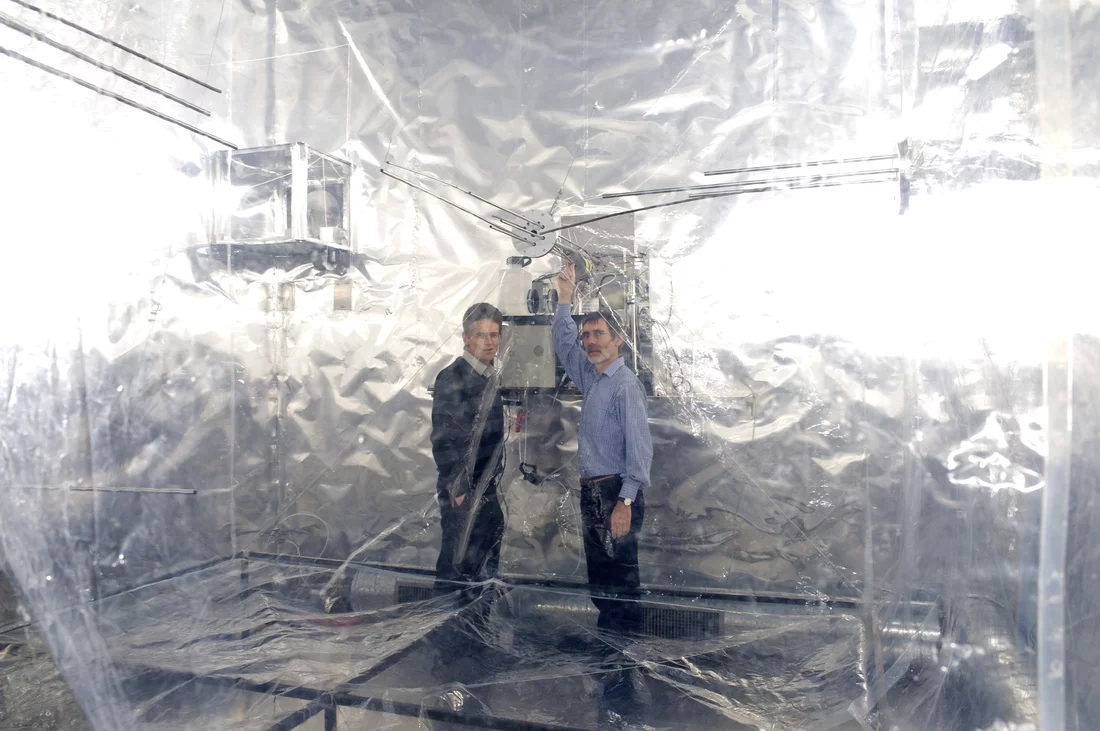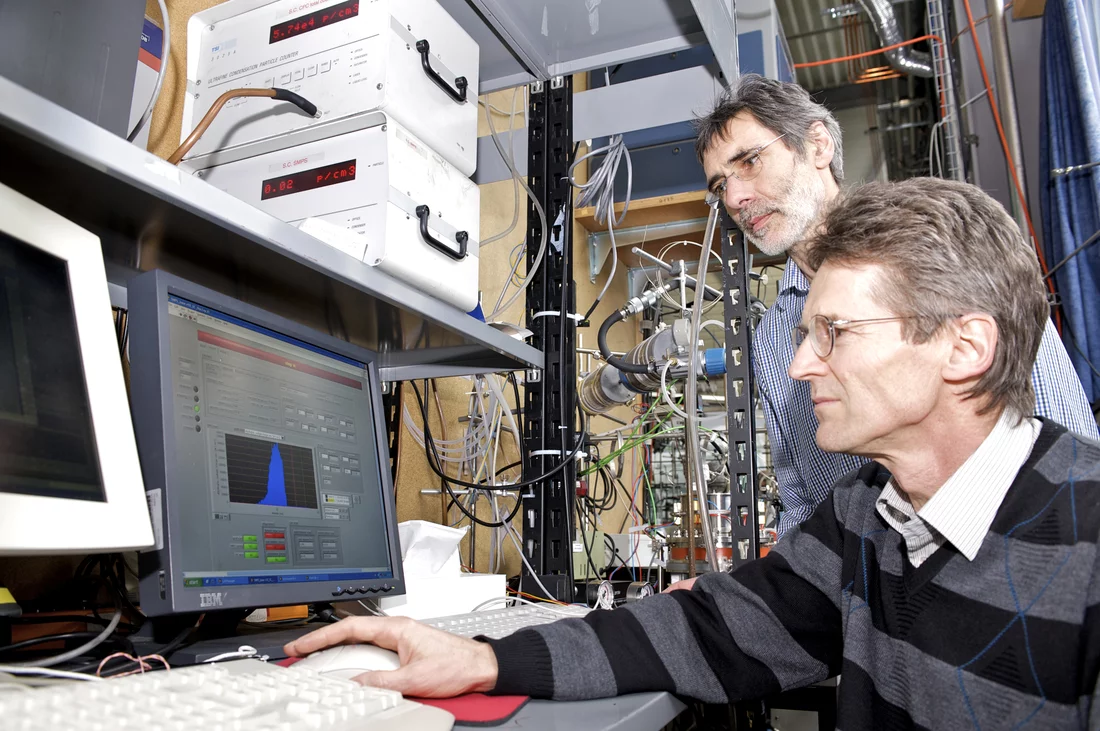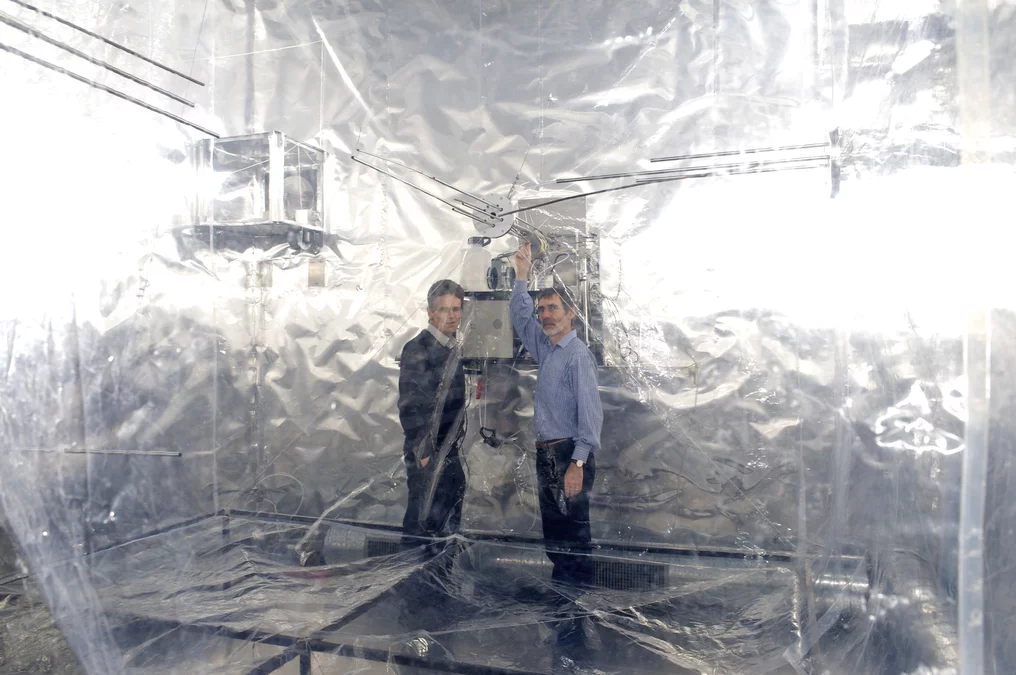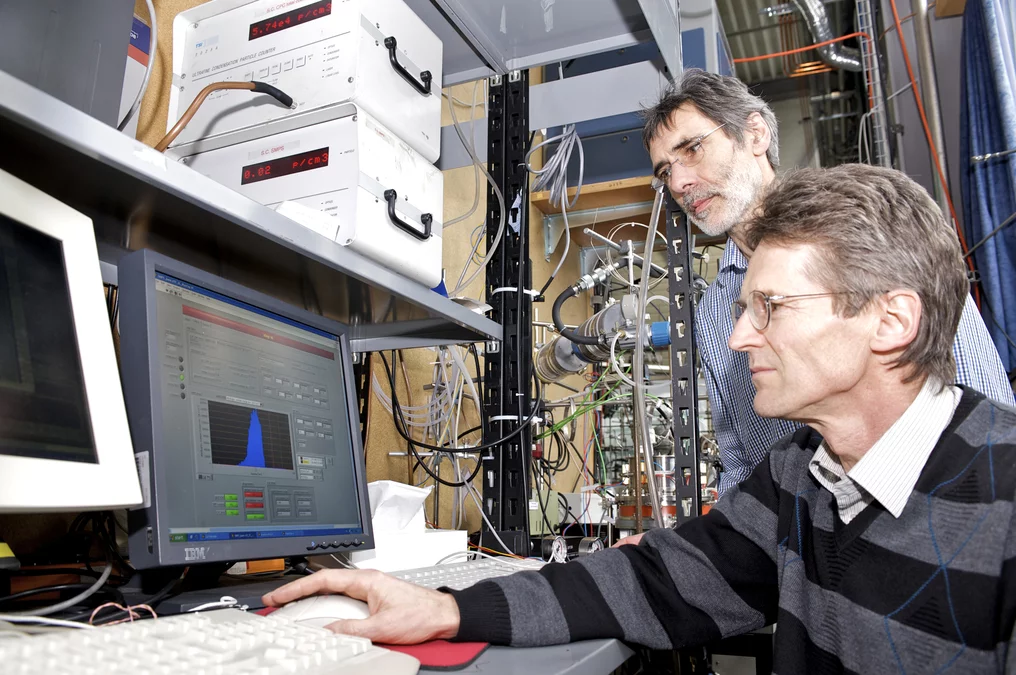Up to the present time, the nucleation or new formation of particles in the atmosphere has been a great enigma. Until recently, research was based on the assumption that sulphuric acid played the central role in particle formation. However, laboratory experiments and field tests have consistently provided conflicting results. In the lab, considerably higher concentrations of sulphuric acid are required for nucleation to take place than in the atmosphere itself. Now scientists from the Paul Scherrer Institute (PSI) have found out the cause for these conflicting results from their smog chamber. These findings will advance climate research to a significant degree.
Clouds have a considerable influence on the earth's radiation levels and, as a result, influence the temperature of the atmosphere. The higher the density of the clouds, the more they prevent the earth's radiation from dissipating into space. On the other hand, clouds also prevent heat from the sun's radiation reaching the earth's surface. The finer the water droplets that make up the clouds, the stronger their cooling effect on the climate, as sunlight is reflected back into space more intensely. The size of these droplets is essentially determined by the number of aerosol particles in the atmosphere that are able to form such a cloud droplet; the higher the number of particles, the finer the cloud droplets. Hence, the number of particles able to form a cloud droplet is very important for climate research.
But where do these particles come from? Some of them are directly emitted into the atmosphere, such as pollen, residue from incomplete combustion, or sea salt from sea spray. Many particles, however, are only formed in the atmosphere as a result of the reactions of gaseous precursors, which is referred to as nucleation, or new particle formation. Until now, there were conflicting explanations as to how this actually takes place and it was believed that sulphuric acid plays the central role in particle formation. However, field and lab tests have yielded totally different results to this day: in the lab, considerably higher concentrations of sulphuric acid were required for nucleation to take place than in the atmosphere itself.
Mechanism of particle formation unveiled
Now research scientists at the Paul Scherrer Institute have been able to shed light on the mechanisms involved. Experiments involving sulphur dioxide (SO2) and an organic gas (trimethylbenzene, TMB) have been conducted in a so-called smog chamber, used to simulate events happening in the atmosphere. In the presence of sunlight, SO2 turned into sulphuric acid, while TMB oxidised to create molecules that were less volatile than TMB itself. When these oxidation products were combined, nucleation occurred at sulphuric acid concentrations considerably lower than those of tests conducted with sulphuric acid alone. The range of concentrations required for nucleation in the lab now corresponds to that found in the atmosphere during natural nucleation. This allowed the scientists to prove that, contrary to what had been believed, it is not two sulphuric acid molecules that trigger nucleation but the combination of a sulphuric acid molecule and an organic molecule. Work is still in progress on ways to find out exactly which organic molecules are involved, but so far no analytical method has been developed to detect their nature. It is possible, however, to estimate their concentration by measuring the decay of TMB, the precursor of these organic molecules.
Global simulation model confirms results
In order to test this hypothesis, scientists from Leeds University integrated the mechanism found at PSI into their GLOMAP Model (Global Model of Aerosol Processes), and the PSI researchers' assumptions were confirmed. When the PSI data were included in the simulation model, the evolution of the particle concentration with increasing height above ground level (vertical profile) matched the profile actually measured in the field much better than had been possible in any other attempts made so far.
These results were published in the Proceedings of the National Academy of Sciences of the United States of America (PNAS) in January 2010.
About PSI
The Paul Scherrer Institute develops, builds and operates large, complex research facilities, and makes them available to the national and international research community. The Institute's own key research priorities are in the investigation of condensed matter and materials sciences, elementary particle physics, biology and medicine, and energy and the environment. PSI is Switzerland's largest research institution, with 1300 members of staff and an annual budget of approximately 260 million CHF.
Additional information:
Prof. Dr. Urs Baltensperger, Head of the Laboratory of Atmospheric Chemistry, Paul Scherrer InstitutTelephone: +41 56 310 2408; E-mail: urs.baltensperger@psi.ch [German, English]
Dr. Josef Dommen, Paul Scherrer Institut, Director of the Smog Chamber Project
Telephone: +41 56 310 2992; E-mail: josef.dommen@psi.ch [German, English]
Original publication:
Evidence for the role of organics in aerosol particle formation under atmospheric conditionsAxel Metzger, Bart Verheggen, Josef Dommen, Jonathan Duplissy, Andre S. H. Prevot, Ernest Weingartner, Ilona Riipinen, Markku Kulmala, Dominick V. Spracklen, Kenneth S. Carslaw, and Urs Baltensperger
Proc. Natl. Acad. Sci. USA, 107 (2010),
www.pnas.org/cgi/doi/10.1073/pnas.0911330107






